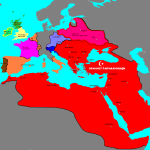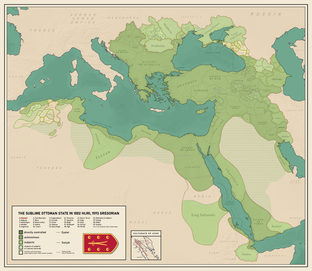
The Ottoman Empire emerged in the Anatolian region of modern-day Turkey. Initially, it was a small principality, but through a series of military conquests, it expanded its territory and became a major power in the Middle East, North Africa, and Southeast Europe. The empire’s strategic location facilitated its control over vital trade routes, connecting Europe, Asia, and Africa.
The Ottoman Empire was characterized by a highly centralized and bureaucratic administration. The Sultan, who held absolute power, was the head of state and the Caliph, making the empire a significant religious authority for Muslims worldwide. The empire was divided into provinces, each governed by a Pasha, who was responsible for maintaining law and order, collecting taxes, and overseeing local affairs.
One of the empire’s greatest achievements was its military prowess. The Ottoman army, known as the Janissaries, was a well-organized and disciplined force that utilized advanced weaponry and tactics. Their conquests included the capture of Constantinople in 1453, which marked the end of the Byzantine Empire and the beginning of a new era.
The Ottoman Empire was renowned for its rich cultural heritage. The architecture of the empire blended elements from Byzantine, Persian, and Islamic traditions, resulting in magnificent structures like the Hagia Sophia and the Topkapi Palace. The empire also produced remarkable works of literature, art, and music, with prominent figures such as the poet Rumi and the miniaturist Osman Hamdi Bey.
However, despite its early successes, the Ottoman Empire experienced a gradual decline starting from the late 17th century. Internal strife, corruption, and weak leadership weakened the empire, while European powers grew stronger and encroached upon Ottoman territories. The empire’s attempts at reform, known as the Tanzimat period, were largely unsuccessful in halting its decline.
By the 19th century, the empire faced numerous challenges, including nationalist movements within its territories and pressure from European powers seeking to exploit its weaknesses. The empire lost significant territories in the Balkans and the Middle East through a series of wars and revolts. It also struggled to modernize its institutions and military, falling behind the rapidly advancing European powers.
The final blow to the Ottoman Empire came with its involvement in World War I. It allied with the Central Powers and suffered a defeat, resulting in the occupation of its capital, Istanbul, by Allied forces. This led to the Turkish War of Independence, led by Mustafa Kemal Atatürk, who established the Republic of Turkey in 1923, effectively ending the Ottoman Empire.
In conclusion, the Ottoman Empire was a significant force in world history, spanning centuries and leaving a lasting impact on the regions it once ruled. From its humble beginnings, it rose to become a powerful empire with a distinct culture, military strength, and complex administration. However, internal and external challenges eventually led to its decline and ultimate dissolution, paving the way for the birth of modern-day Turkey



















Add Comment